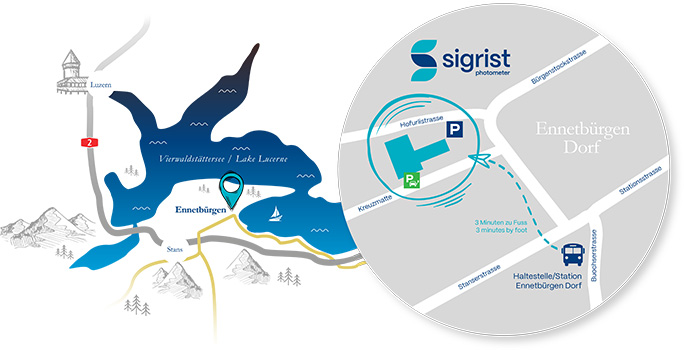Previously referred to as extinction Eλ.
The absorbance is the logarithm to base ten of the reciprocal of the spectral internal transmittance τi(λ).
$A \left( \lambda \right) = \text{log}_{10} \left( \frac{\mathrm{l} }{\tau_{i} ( \lambda )} \right) = \text{log}_{10} \left( \frac{\phi_{\text{in}( \lambda )}}{\phi_{\text{out}( \lambda )}} \right)$
The reading displayed by most commercially available photometers is the absorbance, because it is proportional to the concentration according to the Lambert-Beer Law. But what the photometer actually measures is the transmittance. As the Figure shows, the logarithmic conversion produces a variably high resolution of the absorbance for different transmittance values.

Fig. 1: Absorbance and transmittance
The resolution is particularly good in the high transmittance range. The lowest range evaluated by SIGRIST photometers is 0..0.1 absorptions, the highest is 0..0.3 absorptions.

